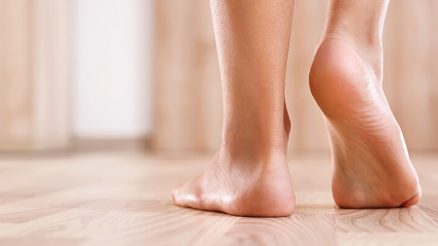In the world of health and wellness, few garments have garnered as much buzz and skepticism as compression socks. From athletes seeking an edge to long-haul travelers trying to avoid swollen ankles, these snug socks promise a range of benefits. But beyond the hype, are compression socks truly worth the investment? Let’s dive deep into what they are, how they work, and who stands to gain the most.
What Exactly Are Compression Socks?
Unlike your everyday cotton socks, compression socks are specially designed hosiery that apply gentle pressure to your legs and ankles. This pressure is strongest at the ankle and gradually decreases as it moves up the leg. This “graduated compression” is key to their effectiveness.
They come in various lengths (ankle, knee-high, thigh-high) and compression levels (measured in mmHg – millimeters of mercury). Lower compression levels (e.g., 15-20 mmHg) are typically for everyday wear and mild symptoms, while higher levels require a doctor’s prescription and fitting.
How Do They Work Their Magic?
The primary goal of compression socks is to improve blood flow. Here’s the science:
- Vein Support: They gently squeeze the leg tissues and walls of the veins, preventing them from expanding. This helps the one-way valves in your veins close properly, which is crucial for pushing deoxygenated blood back up to the heart against gravity.
- Reduced Swelling: By applying external pressure, they help reduce the accumulation of fluid in the interstitial spaces (the spaces between cells), thereby minimizing swelling (edema) in the feet and ankles.
- Enhanced Circulation: Improved venous return means more efficient blood flow, reducing the pooling of blood in the lower extremities. This can alleviate feelings of heaviness and fatigue in the legs.
Who Can Benefit from Compression Socks?
A wide array of individuals can find value in wearing compression socks:
- Athletes (Runners, Cyclists, etc.): Many athletes use compression socks for both performance and recovery. During activity, they may help stabilize muscles, reduce vibration, and improve oxygen delivery. Post-activity, they are believed to aid in flushing out lactic acid and reducing muscle soreness.
- Frequent Travelers: Sitting for extended periods, especially on long flights or car journeys, can lead to blood pooling in the legs and an increased risk of deep vein thrombosis (DVT). Compression socks help maintain circulation and prevent swelling.
- Individuals with Certain Medical Conditions:
- Varicose Veins/Spider Veins: They help manage symptoms and prevent progression.
- Edema (Swelling): Commonly used to reduce swelling caused by various factors, including heart failure or kidney disease (under medical supervision).
- Deep Vein Thrombosis (DVT) Prevention: Often prescribed post-surgery or for individuals at high risk of blood clots.
- POTS (Postural Orthostatic Tachycardia Syndrome): Can help manage symptoms by improving blood return to the heart.
- Occupations Requiring Prolonged Standing or Sitting: Nurses, teachers, retail workers, construction workers, office workers, and anyone whose job involves long hours on their feet or seated can experience significant leg fatigue and swelling. Compression socks can provide much-needed support.
- Pregnant Women: Pregnancy often leads to increased blood volume and pressure on pelvic veins, resulting in swollen ankles and a higher risk of varicose veins and DVT. Compression socks can be a great relief.
- Post-Surgery Patients: Often recommended after certain surgeries to prevent blood clots and reduce swelling.
Exploring the Benefits in Detail
- Reduced Leg Swelling and Fatigue: This is perhaps the most immediate and noticeable benefit. By preventing fluid buildup, legs feel lighter and less tired, especially after long days.
- Improved Blood Circulation: By assisting the veins in returning blood to the heart, compression socks can enhance overall circulatory health in the lower limbs.
- Prevention of Blood Clots (DVT): For at-risk individuals, they are a crucial preventative measure against serious conditions like DVT, where a blood clot forms in a deep vein, typically in the leg.
- Aiding Muscle Recovery and Reducing Soreness: While research is ongoing, many athletes report that wearing compression socks after intense workouts helps reduce delayed onset muscle soreness (DOMS) and speeds up recovery.
- Managing Venous Conditions: For those with existing varicose veins or chronic venous insufficiency, compression socks are often a cornerstone of treatment, helping to manage pain, swelling, and prevent further damage.
Potential Downsides and Considerations
While generally safe, there are a few things to keep in mind:
- Discomfort and Difficulty Putting On: Especially for higher compression levels, they can be challenging to put on and take off, and some people find them uncomfortably tight initially.
- Heat Retention: On hot days, wearing compression socks can feel warm, which might be a downside for some.
- Cost: Quality compression socks can be more expensive than regular socks, though their durability often makes them a worthwhile investment over time.
- Incorrect Sizing: Wearing socks that are too loose won’t provide the intended benefits, while socks that are too tight can be detrimental, potentially cutting off circulation. Proper measurement and fitting are crucial.
- Not a Cure-All: Compression socks manage symptoms; they don’t cure underlying medical conditions. Always consult a healthcare professional for diagnosis and treatment of serious circulatory issues.
So, Are They Worth It?
The verdict largely depends on your individual needs and lifestyle.
- For occasional use (e.g., a long flight or a particularly grueling workout), even mild compression can provide noticeable relief and comfort, making them absolutely worth it.
- For ongoing conditions (e.g., chronic swelling, venous insufficiency, or occupations requiring prolonged standing), compression socks can be an invaluable tool for managing symptoms, improving quality of life, and preventing complications. In these cases, they are definitely worth the investment, often becoming a daily necessity.
In essence, if you frequently experience leg fatigue, swelling, or are at risk for circulatory issues due to your lifestyle or medical history, compression socks are very likely worth considering. They offer a non-invasive, drug-free way to support your circulatory health and alleviate discomfort.
However, always remember to choose the correct size and compression level. When in doubt, especially for medical conditions or higher compression levels, consult your doctor or a pharmacist for personalized advice and fitting. With the right pair, compression socks can be a truly beneficial addition to your wellness routine.








